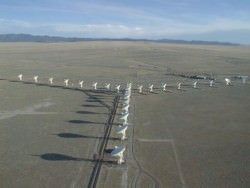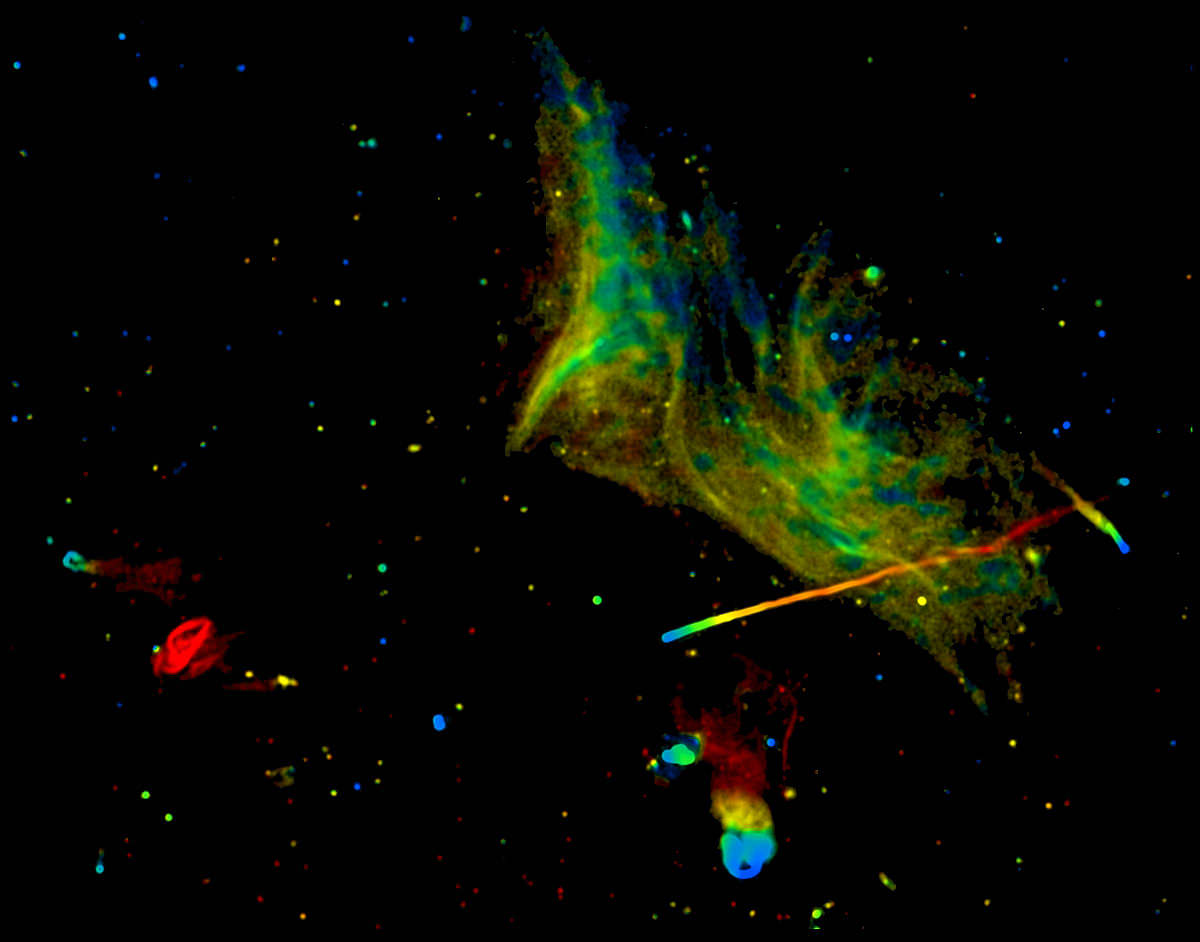Even though it’s said that the average human eye can discern from seven to ten million different values and hues of colors, in reality our eyes are sensitive to only a very small section of the entire electromagnetic spectrum, corresponding to wavelengths in the range of 400 to 700 nanometers. Above and below those ranges lie enormously diverse segments of the EM spectrum, from minuscule yet powerful gamma rays to incredibly long, low-frequency radio waves.
Astronomers observe the Universe in all wavelengths because many objects and phenomena can only be detected in EM ranges other than visible light (which itself can easily be blocked by clouds of dense gas and dust.) But if we could see in radio waves the same way we do in visible light waves – that is with longer wavelengths being perceived as “red” and shorter wavelengths seen as “violet,” with all the blues, greens, and yellows in between – our world would look quite different… especially the night sky, which would be filled with fantastic shapes like those seen above!

Created from observations made at the Very Large Array in New Mexico, the image above shows a cluster of over 500 colliding galaxies located 800 million light-years away called Abell 2256. An intriguing target of study across the entire electromagnetic spectrum, here Abell 2256 (A2256 for short) has had its radio emissions mapped to the corresponding colors our eyes can see.
Within an area about the same width as the full Moon a space battle between magical cosmic creatures seems to be taking place! (In reality A2256 spans about 4 million light-years.)
See a visible-light image of A2256 by amateur astronomer Rick Johnson here.
The VLA radio observations will help researchers determine what’s happening within A2256, where multiple groups of galaxy clusters are interacting.
“The image reveals details of the interactions between the two merging clusters and suggests that previously unexpected physical processes are at work in such encounters,” said Frazer Owen of the National Radio Astronomy Observatory (NRAO).

Learn more about NRAO and radio astronomy here, and you can get an idea of what our view of the Milky Way would look like in radio wavelengths on the Square Kilometer Array’s website.
Source: NRAO


lightcable like artifacts but in radiowave style?
Shortwave exits faster while longer waves stays in the tube-shape longer … kinda idea.
With only a single trailing tube.
And … ehm, where did the long radio wavelengths go in the cluster?
Love it. I always see crazy amounts of lights and colors in the night sky in my dreams. Like I’m on alien planets. Maybe I’m seeing radio waves.
I have to recommend this site:
http://www.chromoscope.net/
And what a beautiful radio image. I can imagine how the jets from a neutron star could shape that nebula. I do see a naked girl too, but that is another problem.
That is a very cool website ^ chromoscope